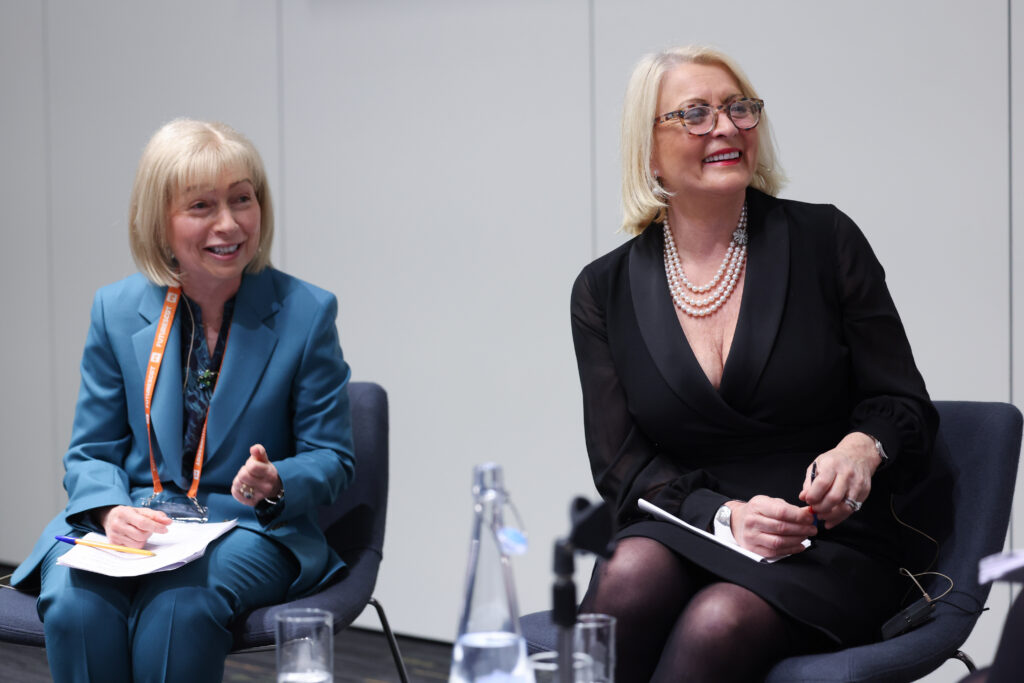A new national platform giving people access to their health and care records in Scotland will not just be an “NHS app”, a leading government official has confirmed.
The Digital Front Door programme is looking to extend its reach into the social care sector, and potentially even be of use to people on benefits and in the prison system.
Jonathan Cameron, deputy director for digital health and care at the Scottish Government, said that the programme has faced difficulties but there is a commitment for it to be delivered by the end of the current parliamentary term in May 2026.
“It’s been challenging, and we’ve certainly learned a lot,” Cameron told delegates at Futurescot’s annual Health & Care Transformation conference on April 16 in Glasgow.
He said that the government has been working through its own innovation accelerator – CivTech – on a ‘digital post’ system similar to one pioneered in Denmark, which has proved successful at data sharing with different parts of the public sector. Such a system, he said, may influence the shape of the Digital Front Door programme in Scotland.
He said: “It is challenging, though, and I think the thing I would stress is that we’re not going to have an NHS app.
“I think we have to go beyond this idea that it’s health only – and that this is, for us in Scotland, a real opportunity to see this as a chance to do health and care.”
He added: “And in some cases go beyond that, as well. Could we use that to help automate benefit payments, for example?
“Another really exciting piece of work we’re doing right now is with the prison service. We’re taking the existing NHS Near Me service and turning that into a way that actually supports social care and social workers not having to travel to visit the detainee…improving the support that a person coming out of prison will have with their social worker, or their support networks.

Jonathan Cameron, deputy director for digital health and care at the Scottish Government
“So, we’re taking that existing technology and existing idea and putting it into a new area. So, all of these different things are starting to come together into broadly what we call the Digital Front Door.”
The Digital Front Door was included in the Scottish Government’s programme for government in 2021. It was described as ‘safe and secure digital app’ that would enable users to update their personal information, manage who sees their data, access self-help information and guidance, attend appointments virtually, place prescription orders, view their health records, and request, book and manage appointments.
At the conference, Richard McCallum, director of health and social care finance, digital and governance at the Scottish Government, added: “It will allow people to access, self-manage and contribute to their own health and care information, where it’s safe and appropriate to do that. And I think if we’re going to do that, we have to design that in such a way that it takes people with us, and that it’s very much with the thought of the users in mind. And that’s equally true for the integrated social care and health record.”
Cameron described digital as the “hope on the horizon” during a panel discussion with health and care colleagues at the University of Strathclyde’s Technology and Innovation Centre. He was joined by Karen Hedge, deputy chief executive of Scottish, who gave details of an innovative project within NHS Fife which is seeking to solve the issue of ‘missing patient notes’ during a patient’s transition from hospital care back to the community.
“So, one of the things that stops people from having a proper discharge experience from hospital is often that their notes get lost, so they can’t get the care at home they need,” said Hedge.
“In the meantime, what we’re doing is trialling QR codes on people’s identity bracelets, so that when they go in the ambulance, they can scan the QR code and access the data. Ideally, we’d also like the individual to be able to access their own records because heaven forbid, they should know what’s being said about them.”
One of the elements of the Scottish Government’s updated health and social care data strategy covers ‘information standards and interoperability’, and a data standards ‘sub-board’ has been set up to ‘set out the preferred standards for use across the health and social care sector’. That has particular relevance for the emerging National Care Service, which will depend on such standards allowing for the smooth exchange of data.
Data was a key part of the discussion throughout the event. McCallum highlighted the need to solve a common complaint where patients have to repeatedly tell their stories, which could be avoided if the various professionals involved in their care had access to the right information – when they needed it. This was a shared concern with Nicola Dickie, director of people policy at Scottish local government umbrella group, COSLA, who that it would be good to build on the goodwill when it comes to data-sharing that helped Scotland manage the Covid pandemic.
“The Covid pandemic demonstrated what we could do when we united against that common enemy, and when we kind of got all of the barriers out of the way,” Dickie said, who said all the problems with data-sharing agreements “moved out of the way”. She argued that it would be good if the outcome of the health and social care data strategy was to solve that issue.
That sentiment was echoed by Professor Dame Anna Dominiczak, Chief Scientist (Health), at the Scottish Government, who said that access to data was one of the main frustrations for clinical trials and research. She said removing the duplication around information governance would – with the agreement of patients and communities – help speed up the innovation work she was keen to see in rolling out new treatments.

Professor Dame Anna Dominiczak, Chief Scientist (Health) left, with Sheila Flavell, President, techUK
She said that was particularly the case for clinical trials – where access to data was slowed down by information governance rules. Speaking alongside Sheila Flavell, president of tech trade body techUK, she said: “Our colleagues in England are postulating, and I think they are now well advanced in [creating] one IG for the entire NHS. I think we need the same in Scotland; I’ve said this before but there are 14 territorial health boards in Scotland, and each has its own right to information governance, and so does every GP surgery. I think if we can safely, thoughtfully and with patients and communities’ agreement have one IG for Scotland, everything would be better.”
Dominiczak praised the recent twinning of the Scottish Government’s flagship £42 million Techscaler programme with the NHS in Scotland – allowing for more support for innovation on the frontline of healthcare. But she added that the life sciences industry needs to work with government to move towards a more preventative model of healthcare.
“I think increasingly, the life sciences industry, very strongly in Scotland, together with that partnership of academia and our NHS needs to move to innovate into the area of prevention,” she said, describing oft-cited concerns about conflicts of interest as largely “nonsense”. She said: “You can’t do anything new if you don’t talk and collaborate,” citing the new Accelerated National Innovation Adoption (ANIA) pathway as a great initiative to provide innovation at scale and ‘once for Scotland’, which could be the future blueprint for tech adoption across the NHS.
A new ‘access service’ for researchers will also help to act as a signpost for industry and academics – a recently launched service from Research Data Scotland, McCallum added.
He said: “These are the first steps in enabling easier access to data at pace, allowing research to be undertaken to support developments such as better treatments that will ultimately improve delivery of care.”
In the afternoon, Ryan Anderson, policy lead for data and intelligence at the Scottish Government, presented an overview for the key priorities of the recently revamped health and social care data strategy, a shared endeavour between central and local government.
He cited some of the achievements of the strategy so far, designed to make data flow between organisations across the NHS and social care, including the reformed Community Health Index (CHI), which has seen eight legacy systems consolidated into one, and the launch of an analytics platform – Seer 2 – allowing healthcare staff to access and analyse data more easily.
Going forward, the priorities this year are to support the expansion of the National Digital Platform for healthcare, the continued development of Digital Front Door and integrated social care records, he said. Further to that there are efforts underway to create a ‘legal gateway’ allowing for information sharing and data standards to be set as part of the forthcoming National Care Service.




